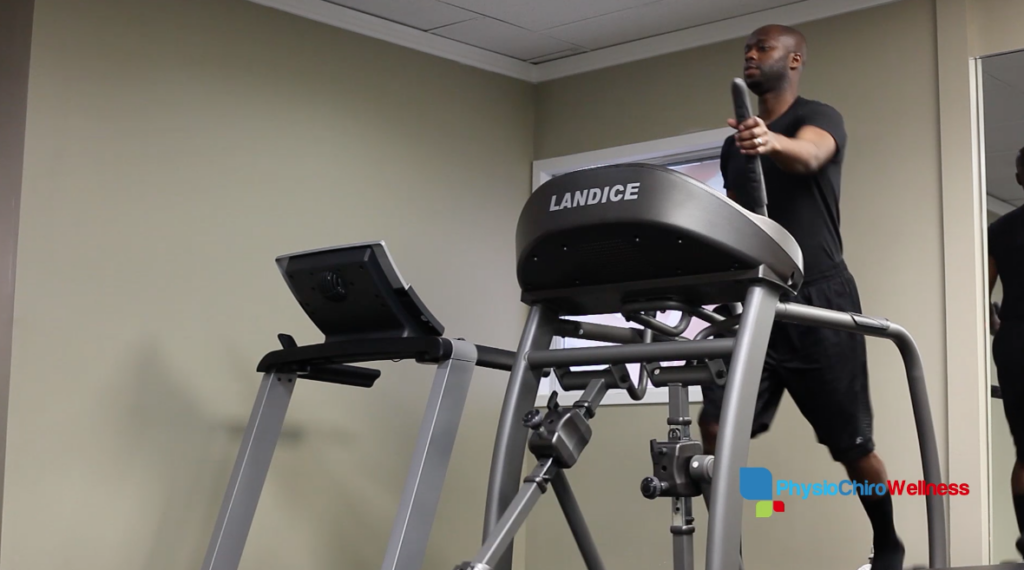Selecting An Exercise Program

Selecting an Exercise Program
Endurance, Strength, Balance, Flexibility, and Plyometrics
If you have made the decision to become more physically active and select exercise program, then you are already on the right track. The next step is to identify your health and fitness goals to tailor your exercise program appropriately. Here are some of the most common types of exercises, the benefits and examples of each.
ENDURANCE
Endurance, or aerobic, training aims to improve your body’s ability to perform a set of skills at a specific intensity over an extended period of time.
Three People Cardio TrainingBenefits:
- Increase stamina
- Improve aerobic (respiratory) system and maximum oxygen utilization (VO2max)
- Improve the heart’s effectiveness (cardiovascular system) and circulation
- Improve overall joint health
- Improve mental alertness
- Increase exercise time / Prevent fatigue
- Increase your metabolic rate, which can help decrease excess fat
- Increase lean muscle mass
- Increase your ability to maintain good posture, which helps prevent several conditions such as neck and back pain
Examples:
- Swimming, Bicycling, Cycling on a stationary bicycle, Gardening (mowing, raking), Walking briskly, Golf – without a cart, Volleyball, Rowing, Dancing, Climbing stairs or hills, Shoveling snow, Tennis, Swimming, Skiing (downhill, cross-country), Hiking, and Jogging
STRENGTH
Strength, or resistance, training aims to increase muscular contraction to improve the size of and force generated by skeletal muscles. This type of exercise program progressively increases the force output of the muscle through a gradual increase in the weight or resistance applied. Strength training may require no equipment and use your own body weight or it may utilize objects for resistance including weight machines, barbells, dumbbells, stairs, hills, specialized elastic bands, Swiss balls, among other tools.
“Exercises With Elastic Strengthening Tibial Tarsal” by AmbroBenefits:
- Increase anaerobic endurance (the performance of shorter, high-intensity exercises that do not rely on oxygen to be completed)
- Increase bone density
- Improve ability to perform daily tasks, such as climbing stairs, carrying groceries
- Improve cardiac function
- Maintain independence
Examples:
- Arm Curl, Arm Extensions, Shoulder Press, Bench Press, Abdominal Crunch, Squat, Leg Press, Lunges, Calf Raise, and Back Row
BALANCE
Balance training aims to improve one’s ability to sense where the body and joints are located relative to objects and space around you (proprioception), as well as training the body to react effectively and promptly in moments of instability. This type of training increases the body’s agility and reaction time to maintain an optimal state of balance in your everyday or sport-related activities.
Benefits:
- Prevent falls
- Increase independence
- Decrease risk of injury such as ankle and knee sprains
- Minimize instability and wasted energy, thereby increasing efficiency
Examples:
- Single or Double Leg Stance, Heel-to-Toe Walking, Wobble Board activities, Bosu Ball activities, Squat, Lunges, Single Leg Bending, and Standing with Eyes Closed
FLEXIBILITY
Flexibility exercises stretch your muscles, mobilize your joints and can help you maintain the optimal range of motion to perform at your best. These exercises help realign disorganized muscle and connective tissue fibers.
Benefits:
- Improve range of motion
- Increase the supply of blood and nutrients (circulation) to your muscles and joints
- Reduce muscle tension
- Prevent injury
- Prevent stiffness and muscle soreness
Examples:
- Stretching, Yoga, Gymnastics, Tai Chi, and Pilates
PLYOMETRICS
Plyometrics are exercises involve having muscles exert maximum force as quickly as possible, with the goal of increasing speed and power. Contrary to strength training which often involves long, slow movements designed to increase muscular strength and mass, plyometric exercises involve quick, explosive movements. This training focuses on transitioning from a lengthened muscle state to a shortened muscle state in a rapid or “explosive” way.
It is important to know that while plyometrics are not inherently unsafe, the high intensity and physically demanding movements used in repetition increase the potential level of stress on joints and musculo-tendinous units. Therefore, this exercise program must be carefully prescribed and closely monitored by an experienced trainer to avoid injury.
Benefits:
- Increase speed and power
- Increase and strengthen fast-twitch muscle fibers, improving muscular contraction
- Improve sport-specific skills and movements
- Improve vertical jump performance
- Improve acceleration
- Improve agility
- Improve bone density
- Improve the functions of muscles, tendons, and nerves
- Strengthen tendons
- Improve the efficiency of the neuromuscular system (the transmission of signals from nerves to your muscles)
Examples:
- Hopping And Jumping Exercises, Repeated Jumping, Double-Leg Hops, Squat Jumps, Lateral/Side Jumps, Power Skipping, Tuck Jumps, Plyometric Push Ups, Depth Jumps, Ground-Level Jumping On Soft Surfaces Such As Padded Mats Or Grass, Jumping Over Cones Or Foam Barriers, and Bounding Exercises Performed In Straight Lines And Patterns
There are numerous exercise program to choose from and others that have not been mentioned. If you would like to determine the most appropriate and safe exercise program for your personal health and fitness goals, contact our health professionals at PhysioChiroWellness Integrated Health Centre to book an appointment.
How Can PhysioChiroWellness Help?
At PhysioChiroWellness Integrated Health Centre our highly-skilled practitioners work together to create fully integrated health solutions that may include physiotherapy, chiropractic, massage therapy, acupuncture, naturopathy, medical aesthetics amongst others. Visit one of our clinics in Mississauga, Ajax, Vaughan and Newmarket. Our professionals will work together towards achieving an optimal health for all our patients through a holistically approach when treating any condition or pain they may present.
